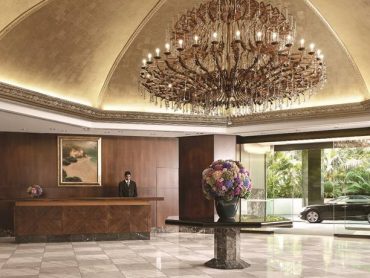Inverting the pyramid to build service reputation
Adapting your organizational structure for today’s rapid communications is a hot topic amongst hoteliers. We all know it’s a necessity, and we’re all curious about how best to initiate this change. But when it comes to the fine print, however, we are often left in the dark. Managers are bombarded with so much work that they seldom have the opportunity to investigate all the technological resources at their disposal.
In the past, a firm pyramidal structure of information distribution provided adequate time for senior managers to review and respond. As well, it insulated executives from trivial data, letting them focus on the big picture. Decision-making occurred at a steady pace, flowing from the GM to the planning committee, then to their line managers. The results reached the guests.
Remember the notion of delivery “in a New York minute”? Forget it, it’s too slow. Ditto for next week’s executive planning committee meeting. Information has to move faster to keep up with the latest postings on your social media outlets and online review sites.
In other industries, one prevalent technique is a “flattening” of the pyramid, where the ranks of middle management are slashed to heighten team initiatives and the sharing of ideas. But this isn’t directly applicable to hotels, as each department has such a unique set of skills. What I am proposing as an alternative to this is an inversion of the classic hierarchical organization pyramid.
Think Water Works
Water flows downhill not uphill. Communications work the same way. It is much easier for information to move down the chain of command to the line staff than it is for it to percolate back up to the executive team.
A compact pyramid will hasten this transmission, but not in a manner significant enough to make a difference by the time a disgruntled guest leaves your hotel. Instead, visualize inverting the pyramid. Put your guests at the top of the chart and next to them are those in direct contact with guests – your line staff.
The importance of this communications model cannot be underestimated. Social media and rating sites like TripAdvisor allow guests to re-tell their on-property experiences in real time, both good and bad. They do not wait for the weekly planning committee before they wreak havoc based on a distasteful room, spa or restaurant experience. The future of your hotel rests in their hands (quite literally, given that customers will likely use iPhone, Blackberry or Android to voice concerns).
So, how do you go about inverting your communications? The answer is empowerment. Line staff can no longer simply follow orders and react to unfamiliar situations by first seeking the wisdom of their immediate supervisors. They must learn to adapt and respond on their own. It’s no longer just about data flowing downstream to the executive team, but making sure the upper strata of the pyramid – the guests – are well fed.
There are two steps to this shift in methodology. First, you must foster a culture of independent action. Front line staff must be given the opportunity to answer guest requests without the “silo thinking” attitude of clearing every action by their manager. The superlative to this involves melding the principles of traditional data filtering and pyramid flattening into codependent action. That is, building an organizational structure with strong interdepartmental sharing.
Inverting the Pyramid Through an Example
Let’s say a guest felt his or her meal at the hotel’s restaurant was displeasing. The normal lines of communication would prompt the waiter, busboy or host who noted the grievance to tell a supervisor, and that supervisor would coordinate the eventual response. The key word here is eventual. Managers are increasingly rushed for time and a request like this may not illicit a pressing reaction.
Empowerment in this scenario means that that staff member has the ability to alleviate the troubled guest on the spot with simple yet elegant touches such as complimentary desserts, coffees or drinks. Taking this one step further, that employee should then be able to initiate feedback with staff in other departments; all within reason, of course. Imagine complaining about a meal, receiving a free confection as a result, but then, upon returning to your room, there’s a gift from the spa along with a handwritten apology.
Now that’s customer service! I don’t know about you, but I would be ecstatic if this happened to me, fully negating any of my previous objections. What’s important to infer from this case is how little the manager has to be involved in the play-by-play and the tremendous impact of a prompt reply.
Sure, you comped some food and beverage, but all for the noble cause of protecting your image. The consequences of failing to directly mitigate could far outweigh any minor revenue loss. Remember, all a guest needs is a smart phone and a smidgen of free time for an endorsement or a denigration to appear online. Your line staff should be able to help decide which of these two conclusions is posted.
The Bottom Line
Empowering your team to delegate ensures that your property is keeping pace with the rapidity of Internet communications. Line staff should know that this sort of discourse is sensible, even if it takes months, or the better part of a year, for them to master all the nuances of immediate guest satisfaction. So, leave decision-making to those at the top of the organizational structure, but think of ways where this pyramid can be inverted to better serve your customers.
(Article by Larry Mogelonsky, published in Hotel Interactive on June 9, 2011)




